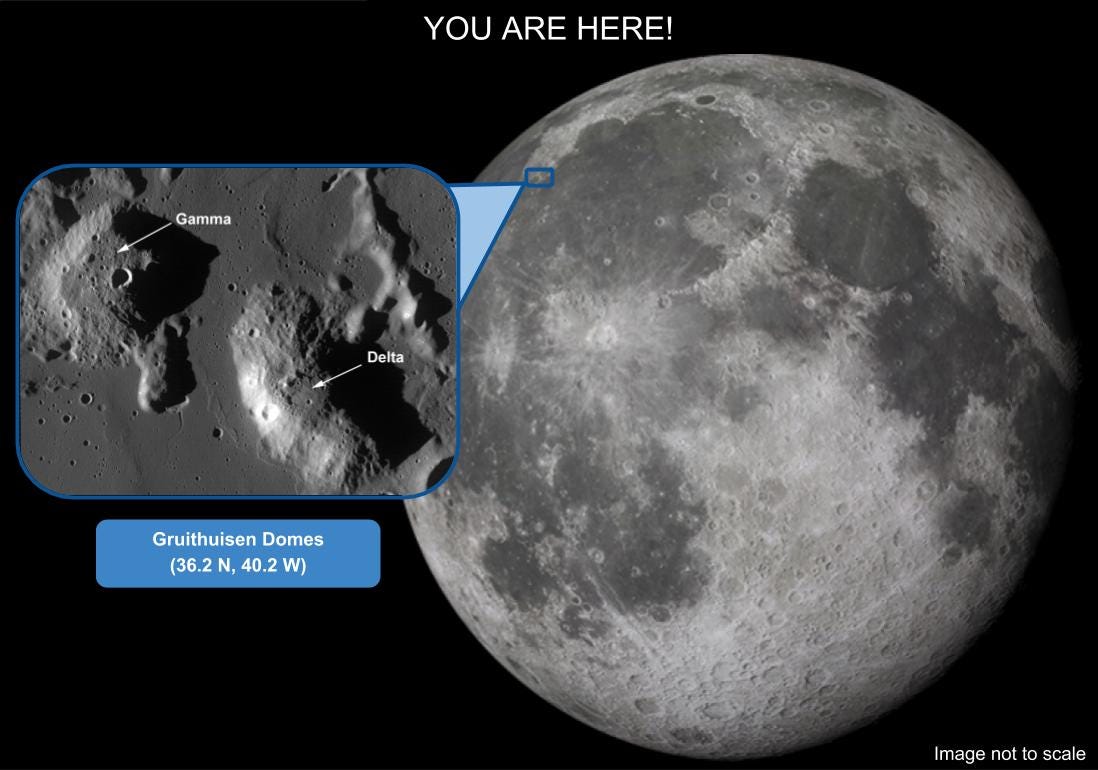Unique volcanic domes of Gruithuisen
Unlike most volcanic features on the Moon, they are silicic, not basaltic.
Seen here are two volcanic domes which are unlike most other volcanic places on the Moon.

Until a couple of billion years ago, the Moon was a volcanically active place. The dark patches of solidified lava plains are its most prominent sign. Most of this volcanism was basaltic in nature, but today's featured image is different. Stretching about 20 kilometers across each, these domes are formed from a different, thicker volcanic flow. We know that from observations of these domes via Earth-based telescopes and past lunar orbiters, specifically Lunar Prospector and Clementine.
Recent data from the Diviner instrument on NASA's Lunar Reconnaissance Orbiter (LRO) confirmed that the volcanic magma that formed these domes were silicic in their composition instead of basaltic. This begs the question of where the required silica come from? On Earth, silicic volcanoes typically require water and plate tectonics to form, both of which the Moon lacks. What are the mechanisms that could create such volcanic domes on our Moon and other planetary bodies? We don’t know! Due to their unique nature, they are a high-priority target for future lunar exploration.

